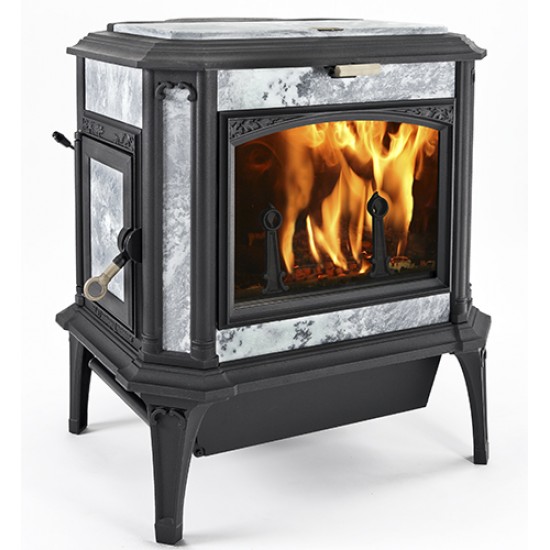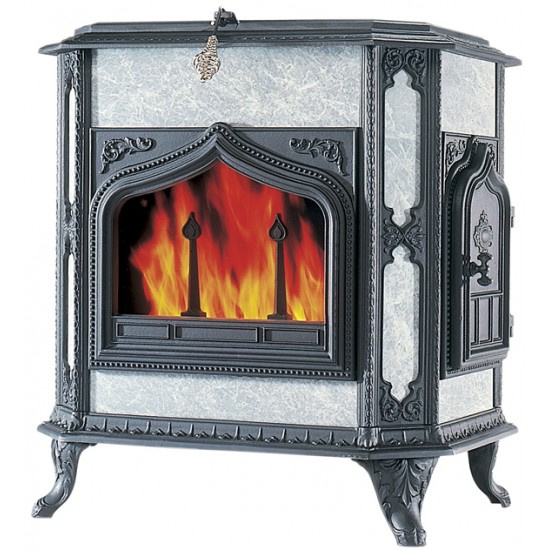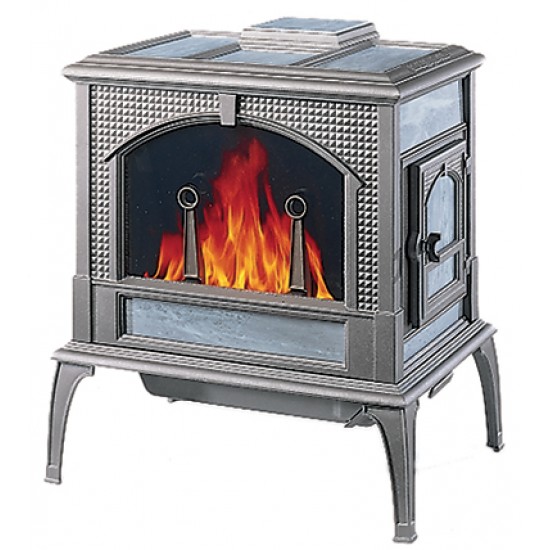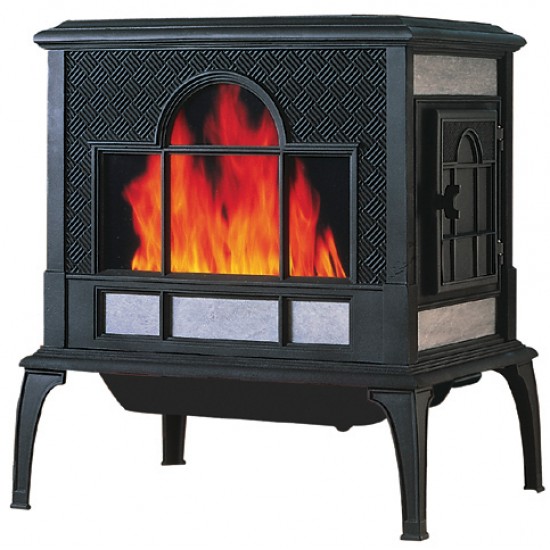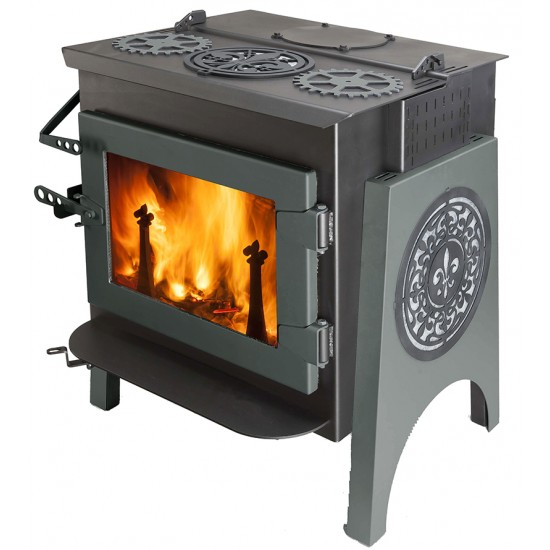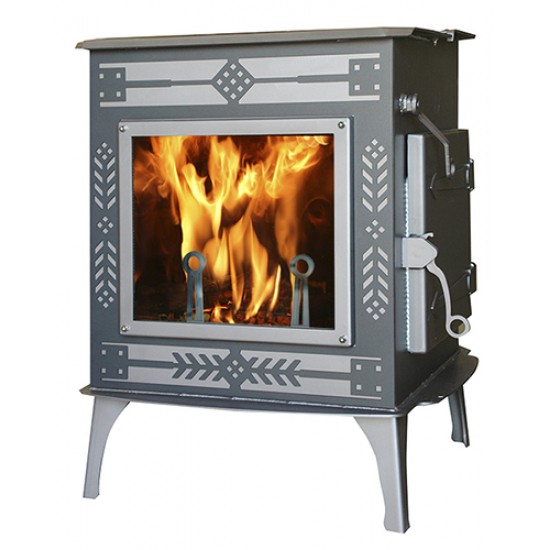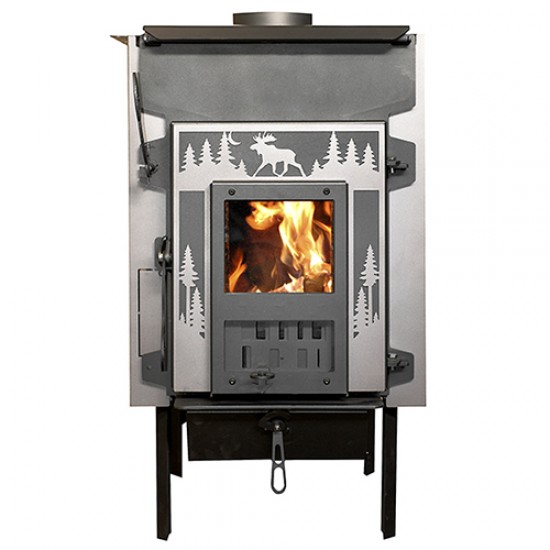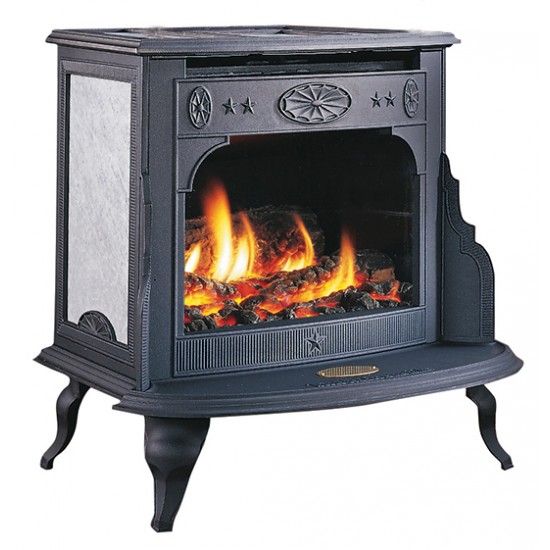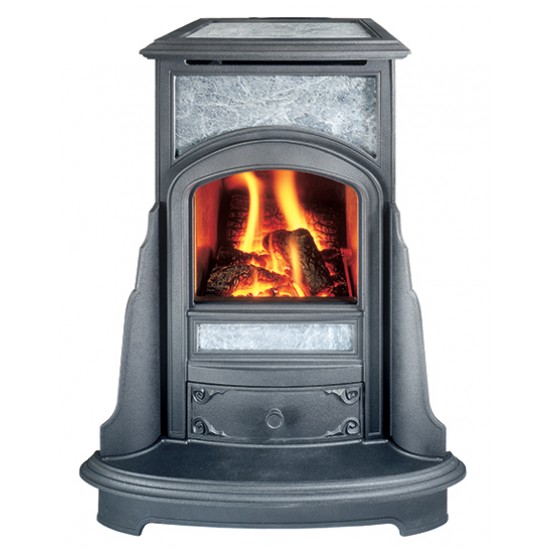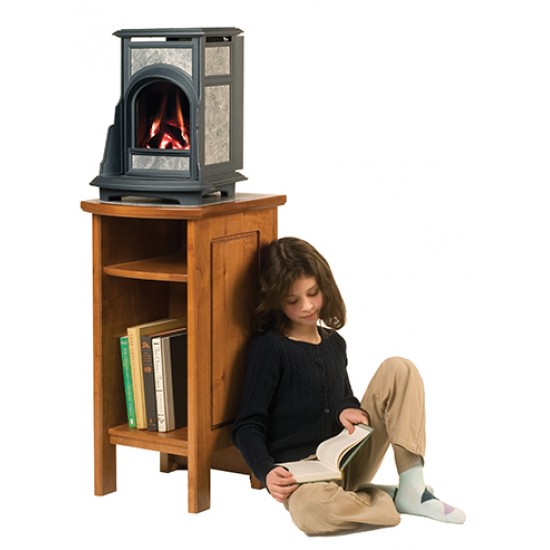01 Nov


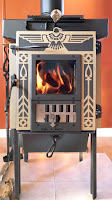 |
| Navajo Beta Stove |
We finished with the design development last summer, and recently completed testing for EPA certification, and a listing to UL 1482. Those test reports have been submitted, and we hope to have approvals before the end of the year.
The stove is a hybrid wood stove (with secondary combustion and a catalyst), and an underfire coal stove (with significant secondary combustion). Part of the design challenge was converting the airflow from wood to coal.
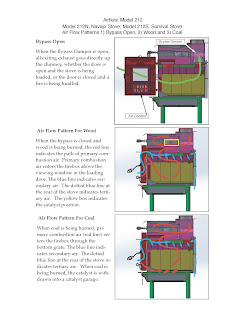 |
| Model of Airflow in the Navajo Coal/Wood Stove |
The average weighted emissions for wood was 1.048 grams per hour, with efficiency of 79.43%. Average emissions with coal was 4.95 grams/hour, with efficiency of 59.7%. We sacrificed quite a bit of efficiency to clean up the coal emissions.
It is a small stove, with a firebox of just 1.15 cubic feet and heat output of 15,332 – 27,294 BTU/hr burning wood, and 7,741 – 10,189 BTU/hr burning coal.
More details in the coming days...

